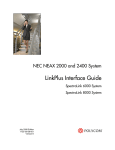Download SpectraLink ROLM PBX User's Manual
Transcript
Siemens ROLM PBX System LinkPlus Interface Guide Link Wireless Telephone System NetLink Wireless Telephone Part Number: 72-0171-13 Issue C SpectraLink Corporation LinkPlus Interface Guide Siemens ROLM PBX System Notice SpectraLink Corporation has prepared this document for use by SpectraLink personnel and customers. The drawings and specifications contained herein are the property of SpectraLink and shall be neither reproduced in whole or in part without the prior written approval of SpectraLink, nor be implied to grant any license to make, use, or sell equipment manufactured in accordance herewith. SpectraLink reserves the right to make changes in specifications and other information contained in this document without prior notice, and the reader should in all cases consult SpectraLink to determine whether any such changes have been made. The terms and conditions governing the sale of SpectraLink hardware products and the licensing of SpectraLink software consist solely of those set forth in the written contracts between SpectraLink and its customers. No representation or other affirmation of fact contained in this document including but not limited to statements regarding capacity, response-time performance, suitability for use, or performance of products described herein shall be deemed to be a warranty by SpectraLink for any purpose, or give rise to any liability of SpectraLink whatsoever. In no event shall SpectraLink be liable for any incidental, indirect, special, or consequential damages whatsoever (including but not limited to lost profits) arising out of or related to this document, or the information contained in it, even if SpectraLink has been advised, knew, or should have known of the possibility of such damages. Trademark Information SpectraLink The SpectraLink logo LinkPlus Link NetLink SVP Are trademarks and registered trademarks of SpectraLink Corporation. All other trademarks used herein are the property of their respective owners. SpectraLink Corporation 5755 Central Avenue Boulder, CO 80301 Within the United States, dial 303.440.5330 or toll free 800.676.5465 Outside the U.S., dial +1.303.440.5330 www.spectralink.com Copyright © 1998 to 2006 SpectraLink Corporation. All rights reserved Information in this document is subject to change without notice and does not represent a commitment on the part of SpectraLink Corporation. The software described in this document is furnished under a license and/or copyright and may only be used with the terms of SpectraLink’s software license agreement as found in this manual or at http://www.spectralink.com/consumer/resources/software_updates.jsp. The software may be used only in accordance with the terms of the agreement. No part of this manual, or the software described herein, may be reproduced or transmitted in any form or by any means, electronic or mechanical, including photocopying and recording, for any purpose except for the sole intent to operate the product or without the express written permission of SpectraLink Corporation. Part Number: 72-0171-13-C.doc Page 2 SpectraLink Corporation 1. LinkPlus Interface Guide Siemens ROLM PBX System About LinkPlus SpectraLink is the market leader in multi-cellular wireless telephone systems for the workplace. We manufacture a range of products to suit any size installation. All SpectraLink products use our LinkPlus digital integration technology to integrate with various digital switch platforms. Using LinkPlus technology, Wireless Telephones (handsets) emulate digital telephone sets to deliver advanced capabilities such as multiple line appearances and LCD display features. This document explains the programming or administration required to use the host digital switch with the following SpectraLink products: Link Wireless Telephone System (Link WTS)– Link 3000 MCU The Link WTS 3000 supports up to 3,200 handsets and up to 1,000 Base Stations. Up to 25 shelves can be interconnected for maximum system capacity. Link Wireless Telephone System (Link WTS) – Link 150 MCU Designed for smaller installations supporting up to 64 handsets and up to 16 Base Stations. Up to four MCU controllers can be interconnected for maximum system capacity. NetLink Telephony Gateway The NetLink Telephony Gateway is a wireless telephony product that provides high quality packetized voice communications using the Internet Protocol (IP). 1.1 Related Documents Link 3000 MCU: Operator’s Console (72-0059-02) Link 150 M3 MCU: Installation and Operation (72-0075-01) NetLink Telephony Gateway: Installation, Configuration, and Administration (72-0065-02) NetLink e340/h340/i640 Wireless Telephone: Configuration and Administration (72-1065-09) Available at http://www.spectralink.com/consumer/resources/manuals.jsp. Telephone Switch Interface Matrix (72-0070-10) Available at: http://www.spectralink.com/consumer/resources/interface_guides.jsp. 1.2 Contacting SpectraLink SpectraLink wants you to have a successful installation. If you have questions please contact our Customer Support Hotline at (800) 775-5330. The hotline is open Monday through Friday, 6:00 a.m. to 6:00 p.m. Mountain time. Part Number: 72-0171-13-C.doc Page 3 SpectraLink Corporation 1.3 LinkPlus Interface Guide Siemens ROLM PBX System Icons and Conventions This manual uses the following icons and conventions. Caution! Follow these instructions carefully to avoid danger. Note these instructions carefully. NORM This typeface indicates a key, label, or button on SpectraLink hardware. Part Number: 72-0171-13-C.doc Page 4 SpectraLink Corporation 2. LinkPlus Interface Guide Siemens ROLM PBX System Plan the Interface The system administrator programs the telephone system for use with the Wireless Telephone System using the normal administration terminal or procedures. Programming can be done after the handsets are registered. Recommended programming includes assigning extension numbers to the handsets and programming features on the telephone system so they are easily accessible from the handsets. For analog interfaces, macro codes are in the document relating to configuring the system. See Link 3000 MCU: Operator’s Console, Link 150 M3 MCU: Installation and Operation, or NetLink Telephony Gateway: Installation, Configuration, and Administration. The following information will help the system administrator set up the SpectraLink handsets to operate in a way that feels familiar and comfortable to users. 2.1 Plan Programming Digital Interface programming for the Wireless Telephone System will be faster if it is planned in advance by verifying the parameters and features on the current telephone system and wired phones. The system administrator must assign extension numbers to the handsets and plan the functions (trunk access, toll restrictions, system features, ringing options etc.) to be programmed for the handsets. One of these scenarios concerning how the handsets are programmed should apply to this site: • All handsets are programmed alike – All handsets will be programmed exactly the same. Depending on the capabilities of the switch, the system administrator can often program one handset and use it as a model for all other handsets. • Groups of handsets are programmed alike – Handsets are grouped into classes that are programmed alike. Depending on the capabilities of the switch, the system administrator can program “model” handsets then use the model as a template to program the other handsets. • All handsets are different – All handsets are programmed differently, so each handset will be programmed individually. Before the system is installed, verify the operating parameters and features on the Rolm system and sets, and set up template tables to reflect the required parameters and features for the handsets. Programming will be faster if you determine this information in advance. Line Assignment The handset supports a total of nine line resources. Which lines should ring at this handset? Extensions Which extensions will be assigned to the handsets? Part Number: 72-0171-13-C.doc Page 5 SpectraLink Corporation LinkPlus Interface Guide Siemens ROLM PBX System Message waiting Does voicemail turn on a message waiting light for this handset? Class of Service To which Class of Service should handsets be assigned? Extension Routing Where is this handset forwarded on busy/no answer? Pickup Group To which group does this handset or group of phones belong? Programmable Buttons The handset supports nine features accessed through the FCN key. Determine which features, if any, should be programmed on the handsets.The Siemens-ROLM technician will create a template table for each unique button layout. It may help to identify a wired ROLMPhone 400 set that is programmed exactly or close to the way the handsets should be programmed. The feature table for this set can be assigned to the handsets and modified accordingly. 2.2 Assign Extension Numbers The wire contractor should inform the system administrator which port numbers have been designated for the handsets. The system administrator may use the Extension Assignments Worksheet at the end of this document to track the port numbers, extensions, users, and features assigned to handsets. Part Number: 72-0171-13-C.doc Page 6 SpectraLink Corporation 2.3 LinkPlus Interface Guide Siemens ROLM PBX System The SpectraLink Wireless Telephone Display The Link Wireless Telephone has a two-line, 16-character alphanumeric display. Certain characters may be used by the system that are not implemented in the handset. Flashing characters are not implemented on the handset, nor is rolling or scrolling of text. Handset Icons The line indicators are associated with line access keys. The status indicators are associated with voicemail (MSG), low battery function (BATT), and service interruption (NO SVC). In addition, a left or right arrow is displayed when the screen can be toggled either left or right to display more characters as described above. Link PTB450 Display When lines are programmed as shown on the key-map diagrams, the numeral icons on the handset display will be mapped to any deskset LEDs associated with the corresponding feature keys. The icons will be displayed as follows: Line State Handset Line Status Icon State On-hook Off Off-hook On Ringing Fast flash On hold Slow flash Part Number: 72-0171-13-C.doc Page 7 SpectraLink Corporation 2.4 LinkPlus Interface Guide Siemens ROLM PBX System Feature Programming Requirements Line Sequences The handset uses two types of key sequences to access PBX features and multiple lines. Line sequences are those where the user presses the LINE button and then a number button. The key-map design designates “line” keys that should be programmed for line appearance so that they correspond to line sequences on the handset. The LINE icon on the handset will reflect activity on the corresponding deskset key. For this reason, it is recommended that line appearance keys be used only for line access. If only one line is assigned to a particular handset, leave the other designated line keys identified on the key maps unassigned. The corresponding handset LINE+ key sequences will then have no function. • Lines 10-19 are not supported on the handset. Function Sequences Function sequences are those where the handset user presses the FCN button and then a number button. Designated “function” deskset keys programmed to system features such as Transfer and Conference may have their corresponding menu items display on the handset function menu. See the key map diagram for the function keys that are available for feature programming. 2.5 Function Menu Programming Link 3000 MCU The function menu text defaults for the handsets associated with the Link 3000 MCU can be changed via the SpectraLink Operator’s Console. Link 150 MCU For the Link 150 MCU, the handset function menu text can only be changed via remote configuration through the services of SpectraLink’s Customer Support. NetLink Telephony Gateways Function menu text options can be changed in the Administration Console of the NetLink Telephony Gateways. Hold The Hold feature should be programmed to the Hold key as shown on the Key-map Diagrams so that when the HOLD button is pressed on the handset, the call is placed on hold. Mute The handset Mute function is hard-coded in the Link WTS to FCN +1. This function sequence is recommended, but the system administrator can assign the Mute function to any available function key sequence or leave the function unassigned. Part Number: 72-0171-13-C.doc Page 8 SpectraLink Corporation LinkPlus Interface Guide Siemens ROLM PBX System Voicemail The message-waiting icon (MSG) on the handset is activated with the message indication of the deskset. The voicemail feature on the deskset must be assigned to the feature key as shown in the Key-map Diagrams. Do not assign any other feature to this key, since the associated LED is directly mapped to the message-waiting icon on the handset. This LED assignment must be used in order to support the messagewaiting icon. Using this key for any other feature or for line access could cause unacceptable system performance. Speaker Phone Because the handset has no speaker, speaker-phone function and functions that require the use of the volume keys will not be made available on the handset. Disable all speaker-phone features, particularly any hands-free features that activate the speaker with the telephone on-hook. Ring Types Handset ring types (soft, normal, vibrate, etc.) are programmed by the handset user and are not accessible or changeable by the system switch. Whenever possible the audible ringer on the handset will follow the cadence provided by the system switch. Call progress tones provided by the host system will be passed through to the handset. Part Number: 72-0171-13-C.doc Page 9 SpectraLink Corporation 3. LinkPlus Interface Guide Siemens ROLM PBX System Interface Implementation This section describes the recommended programming to use the Wireless Telephone System with Siemens Rolm systems. The procedures assume: 3.1 • The Rolm 8000, 9000, 9200, 9751, or 9006, or a Siemens Hicom 300E is installed and operational in an approved configuration. See the Telephone Switch Interface Matrix document for tested configurations. • A trained Rolm technician or system administrator will be on site with the Installer to program the system. • The Link WTS or NetLink Telephony Gateway is installed and the handsets are available for programming. Set the Switch Interface Type Link 150 MCU The Link 150 Master Control Unit requires the switch interface type to be configured using the front panel buttons. The configuration procedures are detailed in Link 150 M3 MCU: Installation and Operation. Link 3000 MCU When configuring the Link 3000 MCU, the PBX interfaces are available as sub-menu selections when defining the Interface Module type using the Link 3000 MCU Operator’s Console. Refer to Link 3000 MCU: Operator’s Console for details on configuring the Interface Modules. NetLink Telephony Gateways Connect to the NetLink Telephony Gateway using the serial or modem interface. From the Main Menu, choose Gateway Configuration. Scroll to Telephone Switch Type and press enter to change this field, from the Submenu of PBX types, select Siemens Rolm. Refer to NetLink Telephony Gateway: Installation, Configuration, and Administration for details on configuring the Telephone Switch Type. Part Number: 72-0171-13-C.doc Page 10 SpectraLink Corporation 3.2 LinkPlus Interface Guide Siemens ROLM PBX System Key-mapping the Handset to Emulate ROLMPhone 400 Functionality LINE + 9 FCN + 5 FCN + 0 LINE + 8 FCN + 9 FCN + 6 LINE + 7 FCN + # MSG LINE + 6 FCN + 7 LINE + 5 FCN + * LINE + 4 FCN + 8 LINE + 3 LINE + 2 FCN + 4 LINE + 1 START HOLD FCN + 1 FCN + 3 FCN + 2 ROLMPhone 400 Key-mapping The FCN [number] and LINE [number] labels represent the key sequence on the handset mapped to the corresponding key on the desk set. The FCN * label indicates that pressing the FCN key on the handset followed by the * key and the [number] key is the sequence equivalent to pressing the corresponding button on the desk set. The handset function menu default settings are shown in the table below; these may be changed as described above in Function Menu Programming. FCN + 1 MUTE FCN + 2 XFER FCN + 3 CONN FCN + 4 CONF FCN + 5 FWD FCN + 6 SV RPT FCN + 7 PICK FCN + 8 CAMP FCN + 9 EXIT MENUS FCN + # STA SP Part Number: 72-0171-13-C.doc Page 11 SpectraLink Corporation 3.3 LinkPlus Interface Guide Siemens ROLM PBX System Program Rolm Each handset must be programmed so the Rolm switch will recognize the handset and allow access to system facilities and features. The Rolm technician or local system programmer should perform the necessary programming. Create Template Table for handsets Set up a template table with features assigned as shown below. 1 LINE 9 FORWD 21 OPEN 31 2 LINE 8 SYSSP 22 SVRPT 32 3 LINE 7 STASP 23 PHML 4 LINE 6 OPEN 24 34 5 LINE 5 OPEN 25 35 33 CALL WAITING CAMP 6 LINE 4 26 7 LINE 3 27 8 LINE 2 28 CONF 9 LINE 1 29 TRANS 36 37 38 MUTE 39 30 10 HOLD 40 CONNECT TRANSFER Note: On the Rolm 8000 and 9000 systems, the PHML button is MSGWT, and the TRANS button is FLASH. The technician can customize the table by assigning features to the unused buttons in the upper quadrant (above Call Waiting, accessed by FCN 0, FCN 7, and FCN *). Do not change the assignments for Message Waiting, Hold, Connect, Mute or Transfer; however, other features and the "Open" buttons can be re-assigned if desired. Part Number: 72-0171-13-C.doc Page 12 SpectraLink Corporation LinkPlus Interface Guide Siemens ROLM PBX System Set Up the handset • For each handset, set up a ROLMPhone defined as RP_400. • Associate this RP with the template table as displayed. • Assign extensions (trunks and lines) to buttons as determined in planning process. Assign the Port Assign the handset’s table and extension to the appropriate port. The installer can now test the handsets. Program Hicom 300E To program the Hicom 300E to emulate a flashhook button on the handset, program the Siemens button 29 as a XFER (Transfer) key. This programming will enable users to access the following features. Transfer START – dial number – END Conference START – dial number – START Conference – Drop Last Call START - ****4 – START Conference – Drop Designated Call START - **4x – START Hold HOLD Hold Return START, LINE # Part Number: 72-0171-13-C.doc Page 13 SpectraLink Corporation 4. LinkPlus Interface Guide Siemens ROLM PBX System Extension Assignments Worksheet Shelf: _______ Interface Module: _______ Handset # Ext. # Name Interface Module Circuit # Handset 1 1 Handset 2 2 Handset 3 3 Handset 4 4 Handset 5 5 Handset 6 6 Handset 7 7 Handset 8 8 Handset 9 9 Handset 10 10 Handset 11 11 Handset 12 12 Handset 13 13 Handset 14 14 Handset 15 15 Handset 16 16 Part Number: 72-0171-13-C.doc Comment Handset Serial # Page 14














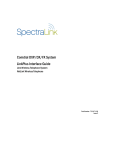
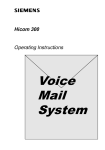


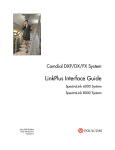
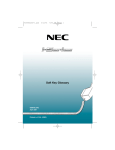
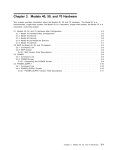
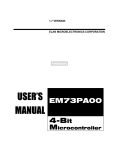

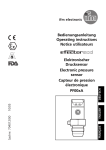

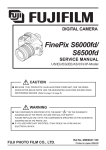
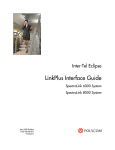


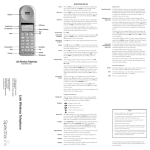
![mm [mm [1 um um [11115151116 |])|]1]](http://vs1.manualzilla.com/store/data/005839409_1-1dd2adaaab9a040f039445848c9c3135-150x150.png)



